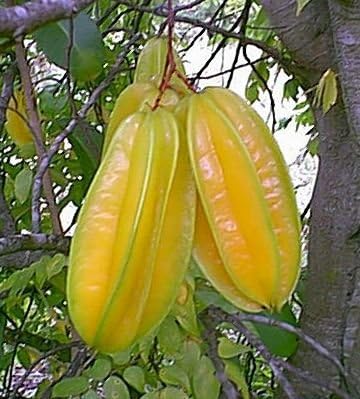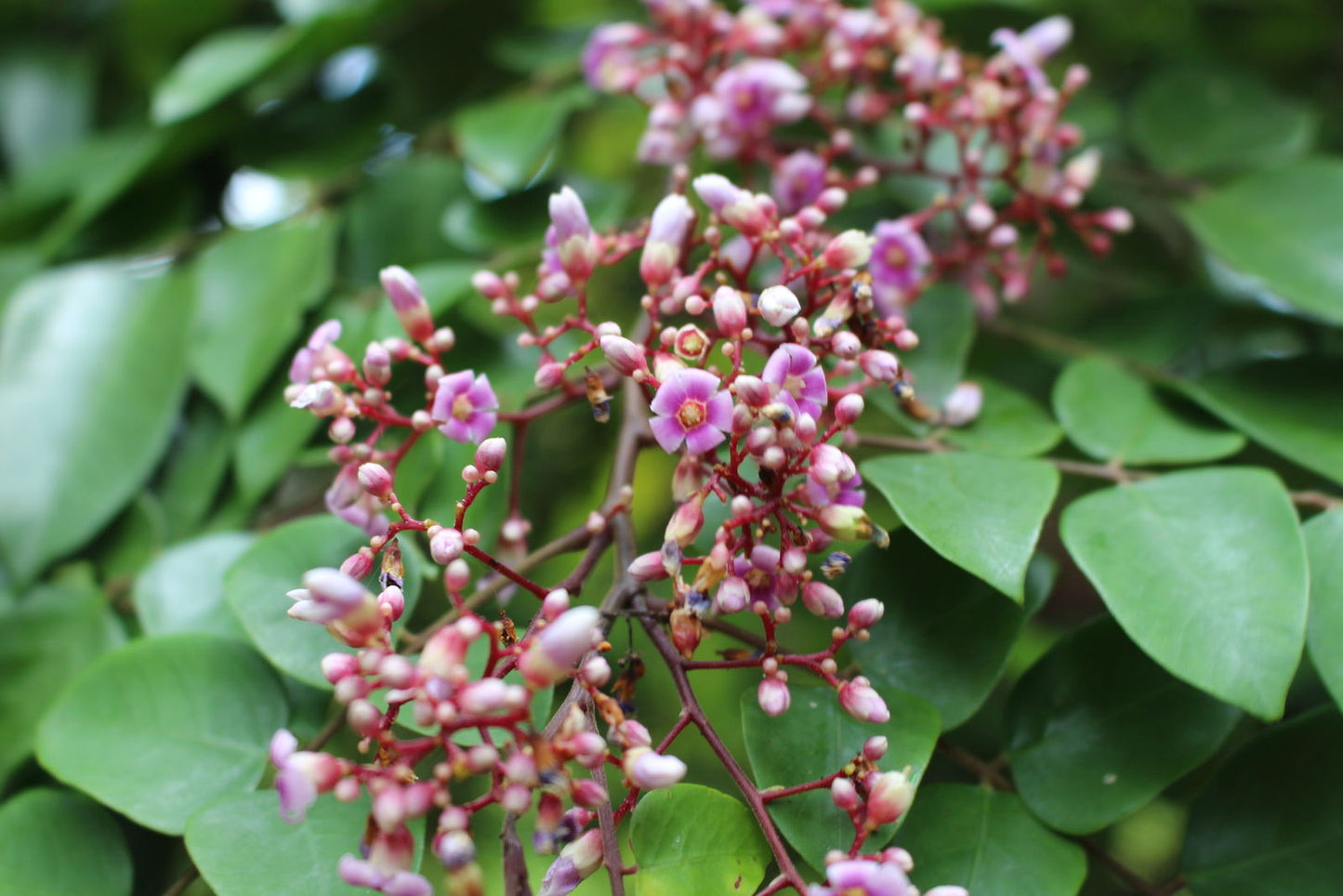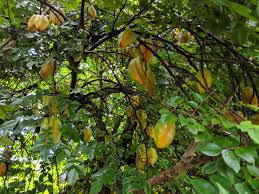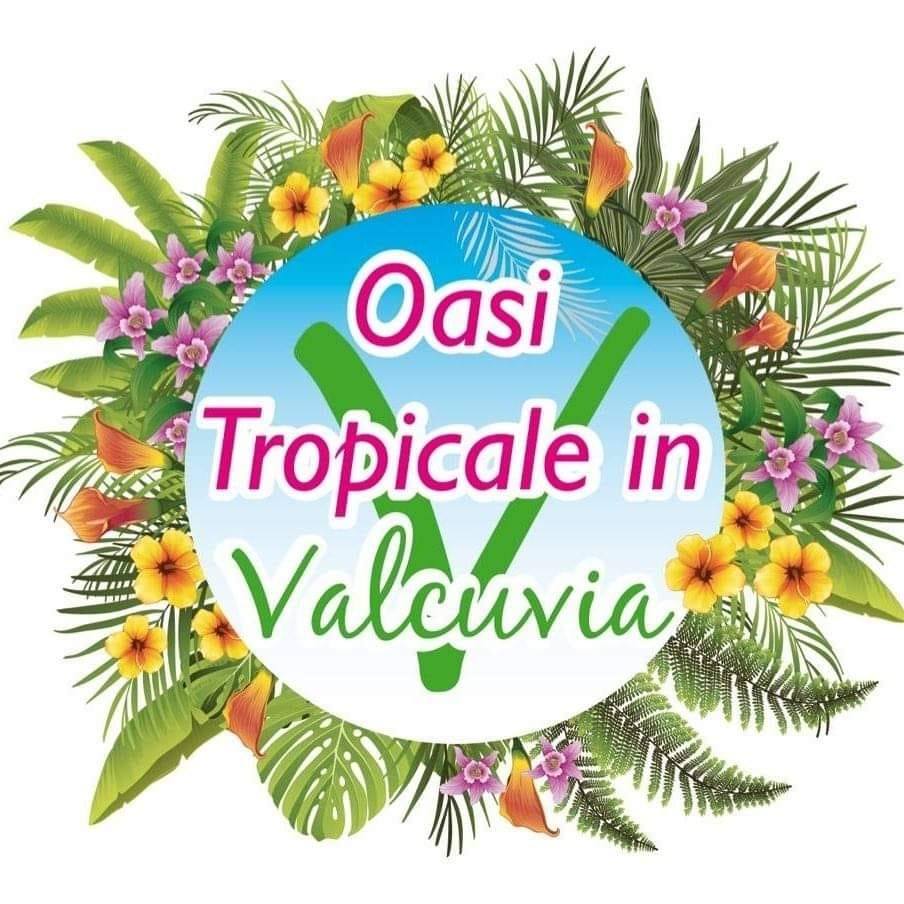-
AVERRHOA CARAMBOLA (CARAMBOLA)
AVERRHOA CARAMBOLA (CARAMBOLA)
Couldn't load pickup availability
MINIMUM TEMPERATURE SUPPORTED -1°C
(DATA REFERS TO AN ADULT PLANT IN OPTIMAL HUMIDITY AND SOIL CONDITIONS)
From Wikipedia, the free encyclopedia.
There carambola (pronounced "caràmbola") is the fruit of the Averrhoa carambola , belonging to the family of Oxalidaceae .
Etymology and other names
It is a Portuguese term derived from Sanskrit karmaphala (transl. "Appetizer food") or dal Marathi karambal . This name is used to define this fruit, particularly in Spain , Portugal And Italy .
In English-speaking countries, carambola is also known by the name of star fruit (trans. "star fruit"). This name comes from the fact that the fruit has distinctive ridges that run down the sides, forming a star-shaped section.
These are the two names used interchangeably in the rest of the world to designate the fruit. However, they are also accepted and used carambola in France , sternfruit in Germany , five fingers (five fingers) moles Caribbean countries .
Cultivation, origin and distribution
Starfruit can be grown up to 1,200 meters above sea level, maintaining a distance of at least 6 meters between each individual crop.
The carom tree is a short-trunked tree of the tropical/subtropical type that does not tolerate the action of wind (apart from the Golden Star variety) and salt. Therefore, carambola can be grown in an area close to the coast with particular caution and care. Parameters used for the success of a good quality harvest are therefore: the absence of wind, soil pH between 5.5 and 6.5, temperatures between 20 °C and 32 °C, annual rainfall around 1800 mm, sunlight exceeding 2000 hours/year. These crops are sensitive to rain et al frost . His boss parasite and the fruit fly .
The tree grows quickly, produces white/pink flowers, is fertilized 3 times a year and produces fruit continuously up to 4-5 years of age: during the course of the year we can notice both ripe starfruit and starfruit still in the process of maturation.
It is hypothesized that it originated in Maluku , Bangladesh and in Sri Lanka , although according to other sources its origin is stated in Indian subcontinent It is in the Southeast Asia .
These are the privileged areas of these crops, even if over the centuries they have been planted in various parts of the world. In the 15th century, caroms were already known to the Western world (as evidenced by the stories of the Dutch Linschoten who compares them to sour apples with ridges [1] ) and in the 18th century in the American continent (1889 in Florida , 1899 in Trinidad and Tobago ) and African (in 1881 the Portuguese first imported them into Canary Islands and then in the Macaronesia ).
Since 2010 this cultivation had such a renaissance that today we also have carom crops in the Pacific ( Queensland in Australia , Tahiti , New Caledonia , Papua New Guinea, Guam , Hawaii ), Central and South America ( Mexico , Jamaica , Haiti , Dominican Republic , Puerto Rico , Trinidad , Nicaragua , Costa Rica , Panama , El Salvador , Colombia , French Guiana , Ecuador , Peru ) and partly in Africa .
Characteristics
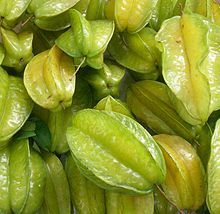
Aesthetic characteristics
The fruit has a shape ellipsoidal (or oval) with a length ranging from 5 to 15 cm, with a diameter between approximately 2 and 9 cm.
It is characterized by 5 (rarely 4-6) prominent ridges, the intersections of which form a star-shaped section.
The skin (or peel) of the fruit is smooth and waxy and, like the pulp, can be translucent and green or dark yellow with brown ridges, depending on the variety.
The pulp is crunchy, juicy and fleshy and vaguely resembles that of prune and of guava .
Each fruit contains 10 to 12 edible brown seeds [2] , flat and externally enclosed by a gelatinous layer of aryl and internally by fatty oil of similar composition to peanut seed oil . Each seed has a width between 6 and 13 mm.
Chemical properties
Contains phenols And flavonoids which quercetin , gallic acid [3] , catechin , routine , epicatechin And proanthocyandins , finding use in traditional medicine as a drug for the treatment of some pathologies such as headache , the nausea , the cough , insomnia , hangover, hypertension and the diabetes . It has digestive properties, antioxidants and antimicrobial: it acts above all against E. Coli , Klebsiella , Staphylococcus aureus And Pseudomonas aeruginosa . The fruit is also used as a remedy for sunburn.
Nutritional values
Starfruit is rich in potassium And C vitamin (about 52% of the recommended daily dose [4] ) and has a low content of sodium and sugar. It also contains nitric oxide in variable quantities based on the state of ripeness.
| Nutritional values per 100 g of product (raw) | Quantity ( * mcg= micrograms / mg= milligrams ) |
|---|---|
| Power | 128 KJ /31 kcal |
|
Carbohydrates
of which sugars of which dietary fiber |
6.73g
3.98g 2.8g |
| Lipids | 0.33g |
| Proteins | 1.04 mg |
| Vitamin A | 66 mcg |
| Thiamine ( Vitamin B1 ) | 0.014 mg (1%) |
| Riboflavin ( Vitamin B2 ) | 0.016 mg (1%) |
| Niacin ( Vitamin B3 ) | 0.367 mg (2%) |
| Pantothenic acid ( Vitamin B5 ) | 0.391 mg (8%) |
| Vitamin B6 | 0.017 mg (1%) |
| Folate ( Vitamin B9 ) | 12 mcg (3%) |
| Choline | 7.6 mcg (2%) |
| C vitamin | 34.4 mg (41%) |
| Vitamin E | 0.15 mg (1%) |
| Soccer | 3mg (0%) |
| Iron | 0.08 mg (1%) |
| Magnesium | 10mg (3%) |
| Manganese | 0.037 mg (2%) |
| Phosphorus | 12mg (2%) |
| Potassium | 133mg (3%) |
| Sodium | 2mg (0%) |
| Zinc | 0.12 mg (1%) |
Risks
Starfruit contains a significant amount of caramboxin and oxalic acid , both substances harmful to those suffering from kidney failure , kidney stones or renal dialysis .
Oxalic acid is toxic because it binds calcium making it unavailable to our body; the calcium crystals that precipitate cause damage to the renal and vascular tissue [5] [6] .
Caramboxin, a glutamatergic antagonist structurally similar to phenylalanine , which is why it causes it in subjects predisposed to the previously mentioned diseases hiccup , vomit , nausea , mental confusion , and, in the worst case, even the death . This powerful neurotoxin, usually excreted by the kidneys, in subjects with renal failure, once accumulated in the blood can exceed blood-brain barrier and create irreversible brain damage [7] .
The neurotoxic amount is estimated to be the intake of approximately 15 whole fruits at one time in a healthy patient, 4-6 whole fruits or 300 ml of juice in a patient with chronic renal failure [8] .
From a pharmacological point of view it is considered a powerful seven inhibitor isoforms of the cytochrome P450 : these enzymes block the first steps of many drugs, and therefore the intake of this fruit helps to increase the effectiveness of the drug taken.
Variety
There are two types of carambola: small and sour, or large and sweet.
Sour varieties contain a higher content of oxalic acid than sweet ones and have a flavor reminiscent of green apple . The most famous acidic varieties are those coming from Florida : Golden Star , Newcomb , Star King And Thayer . The Golden Star, if left to ripen, takes on a sweetish flavour.
The sweet ones have a more complicated flavor (a mixture of citrus fruits , apple , pear And grape ), and of this group the most commercially cultivated star fruit are: Arkin originally from Florida, Dah Poh from Taiwan , But Fueng from the Thailand , But has from the Malaysia And Demak from Indonesia .
| Cultivation country | Name of the variety |
|---|---|
| Florida (United States) |
|
| Indonesia |
|
| Singapore |
|
| China |
|
| Taiwan |
|
| Thailand |
|
| Malaysia |
|
Other varieties that are marketed: Tung , Hoku , Kari And Kembagen [9] .
Uses
Gastronomy

The fruit is entirely edible: pulp, peel and seeds. It is generally consumed after maturation, i.e. when it shows brown ridges. The ripe fruit can have different shades from green to amber yellow. Generally the more acidic varieties must be cooked to be eaten, the sweet ones can be served raw. When cooked they lose some of their properties.
In the kitchen it is used for condiments, liqueurs , cocktails , fruit salads , cakes , candied fruit or preserves. It is also used in thai couscous (a dish based on cous cous , vegetables and carambola) and in Misa Maas Kordoi Tenga ( curry of tradition Assamese with prawns and carambola slices).
In Southeast Asia (especially Malaysia) it is stewed with sugar and cloves or with apples.
In Philippines the unripe starfruit are seasoned with the rock salt .
In Thailand is cooked together with shrimp , while in China with the fish .
In Jamaica he comes dried and in Australia cooked like a vegetable, in brine or transformed into jams .
Other uses
Both the fruit and the leaves of the Averrhoa carambola , due to their original and bizarre shapes, are also used for purposes ornamental .
The bilimbi , the juice of sour star fruit rich in oxalic acid, can be used as forage for them bees , how anti-rust to clean metals (especially brass ) or as biting for dyes and even to remove stains from linen.
Their fruity smell is the basis of many perfumes and colognes. The Escada is one of the companies that produce such fragrances.
Symbolic value
On the island of Java , carambola is seen as a symbol of spirituality. According to the belief of Buddhism Javanese, in fact, the 5 ridges of the fruit are called Pancasila (from Panca = five, Sila = behavior) and would metaphorically indicate 5 fundamental taboos: alcohol , drug , adultery , theft , gamble .
Availability
The leading producer of star fruit is Taiwan with a cultivated area of 3 100 ha and an annual crop production of up to 38 270 t (peak reached in 1986). Most of the production is consumed within the country, a small part is exported to Japan , Hong Kong , Singapore and Canada.
In second place is Malaysia with an arable area of 1 340 ha (2009), mostly in the region of Selangor , is "in charge" of exporting to markets not only in the Far East (among the most important customers are the United Kingdom, Germany and Denmark). Although it is a fruit available all year round, its availability in Western markets is very limited. Malaysia exports it especially during the Christmas period.
RICHIEDI FOTO
RICHIEDI FOTO
Scrivimi su WhatsApp al +393472475878 per ricevere foto piante in vendita
